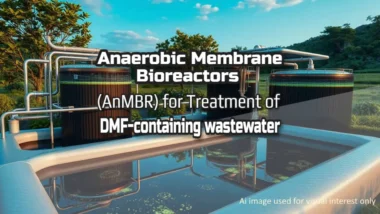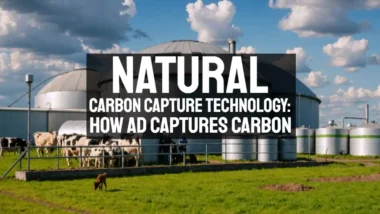We sat down and wrote this article on “5 things you should know before designing a Biogas Plant” to help our readers to create the best biogas plant design way back in 2015. 10 years later, we look back, and we think this information is still relevant and useful. (And, we also added some additional hints and tips which we think you might find interesting!)
The list below contains our top 5 things that we think new anaerobic digestion plant developers should know about before designing a biogas Plant:
1. Feed Material Choice Implications When Designing a Biogas Plant
When starting a biogas plant project, you likely have some organic matter available as feedstock. However, most projects require additional feed materials (also called substrates) to operate efficiently.
While anaerobic digestion plants can process many types of organic materials, each plant has limitations on what it can handle. Your choice of feed materials will fundamentally shape the plant's design and process flow.
Seek a Dependable Long Duration Feed Supply Contract
An important consideration is the growing competition among biogas plant owners for premium waste materials. What starts as a waste stream—where plant operators can charge disposal fees—may become a valuable commodity that operators have to pay for.
To protect against this market shift, we recommend negotiating long-term contracts (10+ years) with biowaste providers. This timeframe typically allows for recovery of the initial investment while securing a stable feedstock supply.

Some wastes like food wastes are highly calorific (making them high gas-yielding and highly desirable for digestion) and may come without any need to comply with the Animal By-products Regulations (UK).
But, before assuming that the wastes of this type will always be freely available and bring in a gate fee, the promoter should note that this value may well quite soon be appreciated by the producer. When that happens the producer may start to charge a fee and not the other way around!
Once there is adequate anaerobic digestion capacity in any region it is common for a seller’s market to develop, and for the producer to start charging the AD Company for the honour of digesting their waste product!
For this reason, when designing a biogas plant always probe deeper and find maybe less high gas-yielding feedstock wastes which are less than ideal as a biogas plant feed material, but at the same time, such feedstocks can be much more secure as long-term economic digester feed sources.
2021 Update Tip: Co-digestion of Manure with Kerbside Collected Household and Commercial Food Waste
Many large dairy farms in the US are now finding that they can obtain financial backing for their biogas digester installations by signing up with their local authority to accept the local town's household and commercial food waste.
This provides a guaranteed gate fee income with a long-term contract. The addition of the food waste provides a big increase in the calorific value of the combined manure/ food waste feed material. The larger the calorific value the more biogas is produced.
The combination of the gate fee and higher biogas output makes a big difference to the profitability of a dairy digester on farms with 1,000 or more cows. So much so that specialist financiers are keen to invest.
2. Design Life of Plant
All biogas plant promoters should think very carefully about the design-life of their biogas plant. Many poor-quality biogas plants are being built which will suffer long-term problems and will close a long while before better quality AD plants, built to a longer “design life”. This can make “cutting corners” very bad value.
When is a Construction Cost Saving a Long Term Cost?
The majority of biogas plants are built to a budget as a necessity of funding, nevertheless, as the industry matures those buying biogas plants will have to stop buying the lowest priced tender and develop an in-depth understanding of value for money, and “lifetime maintenance” costs. It is ONLY by doing this and specifying the design life of biogas plants from the start, that better value can be obtained.
An example is the use of cheap mild-steel plate-based digester tanks that are inadequately corrosion protected later leading to corrosion penetration, leakage and plant commissioning for repair work.
Another common error is to spend too little on feedstock pre-processing for the removal of all non-organic contaminants especially when accepting food waste. A digester tank that fills with plastic, and inert materials can require hugely expensive emptying and specialist cleaning.
Fortunately, the latest low-destructive depackaging and separation equipment is far better than older models.
A reasonable design life to specify for AD plants is 15 to 20 years, maybe longer. However, few if any tank suppliers will provide a warranty for the continued corrosion-free performance of glass coated steel tanks beyond 10 years.
Avoid the Temptations of Short Lifetime Design
10 years is too short a design life for anaerobic digestion plants.
Precast concrete tanks which are usually multi-jointed and post-stressed look good on paper but the construction method is truly difficult to achieve. The wall units are imported to the site ready-made but they must be connected together with multiple water-tight vertical construction joints. Many such tanks have failed structurally well before the end of their design life due to invisible corrosion of the circumferential steel tendons.
3. Need for Mixing when Designing a Biogas Plant
Biogas plant substrates need mixing.
As offered by the cheapest AD Plant contractors, on-farm plants are frequently not supplied with any mixing equipment.
This is more often than not a mistake soon regretted and will shorten the life of the plant in between costly maintenance work.
4. Avoidance of Pump and Pipe Blockages
Novice designers of biogas plants can offer very low-cost AD plants, which work on paper, but not successfully when constructed.
Designing AD plant pipework is truly the domain of experienced pipe flow engineers only. To avoid problems later with pump and pipe blockages needs a designer who understands every aspect of designing-out blockages.
Blockage avoidance measures range from pump model selection to choice of pipe diameters, bends and specials.

5. Build Up of Grit
Often overlooked is the propensity for any biogas plant design which accepts waste material to become blocked-up due to the presence of grit that enters (wet AD) biogas digesters.
Once grit settles it won’t come out until the whole tank is dug out with a Tomcat type excavator, or similar!
Always ensure that any AD plant designer has made adequate provision for removing any grit build up.
Conclusion to Designing a Biogas Plant and the 5 Things You Should Know First
This list of tips doesn’t cover all the problems that can occur. Nevertheless, these are at least some of those that keep occurring and that we thought that our readers would benefit from knowing about.
Frequently Asked Questions About Designing a Biogas Plant
Q: What should I consider when choosing feed materials for a biogas plant?
When choosing feed materials (substrates) for a biogas plant, consider:
- The plant's ability to process different types of organic matter
- Long-term availability of the feed material
- Potential future costs of obtaining the feed material
- Competition from other biogas plant owners
- The need for long-term contracts (10+ years recommended)
- Calorific value of the feedstock
- Whether less ideal but more secure feedstock sources might be better for long-term operations
Q: What is the recommended design life for a biogas plant?
The recommended design life for a biogas plant is 15-20 years or longer. It's important to note that choosing cheaper materials like mild-steel plate-based digester tanks may limit the plant's lifespan, as many tank suppliers only provide warranties for up to 10 years. When considering concrete tanks, in-situ cast reinforced tanks poured in one go are preferred over precast concrete tanks with multiple joints.
Q: Why is mixing important in biogas plant design?
Mixing is crucial in biogas plants because it ensures proper substrate distribution and digestion. The best mixing systems for large CSTRs (Continuously Stirred Tank Reactors) are externally mounted and include a sparge cycle, which combines water jets with biogas injection to break up surface crusts and maintain efficient digestion processes.
Q: How can pump and pipe blockages be prevented in biogas plants?
Preventing pump and pipe blockages requires experienced pipe flow engineers who understand comprehensive blockage prevention. Key considerations include:
- Proper pump model selection
- Appropriate pipe diameter choices
- Careful design of bends and special fittings
- Expert understanding of flow dynamics
Q: How should grit build-up be managed in a biogas plant?
Grit build-up should be managed through:
- Installation of modern grit separator units before the digester
- Proper design features for grit removal
- Regular maintenance procedures
- Consideration of depackaging systems for food waste that can also remove plastic and grit
Proper grit management is essential as settled grit can only be removed by emptying the entire tank and using specialized excavation equipment.
Q: What are the benefits of co-digesting manure with food waste?
Co-digesting manure with food waste offers several advantages:
- Guaranteed gate fee income through local authority contracts
- Increased calorific value of the combined feed material
- Higher biogas production
- Better profitability for dairy digesters
- Attractive proposition for financial investors
This approach is particularly beneficial for dairy farms with 1,000 or more cows.
[Article first published in August 2015. Updated August 2021 and FAQs added January 2025.]





Hi! Very useful info you give for me to use to design my biogas plant.
Hi I am trying to design my own biogas plan and stuck with the use of two separate tanks or putting tanks on each other . Which will be more sustainable design and how to introduce a stirrer ?
Hello,
nice post and Very useful.
Thanks…
Easy to follow, readable… good tips on designing AD plant. Heck. That’s one mighty good article. Sir
Great post. Yes. Things you should know but sometimes you just need to jump in and get started and learn as you go.